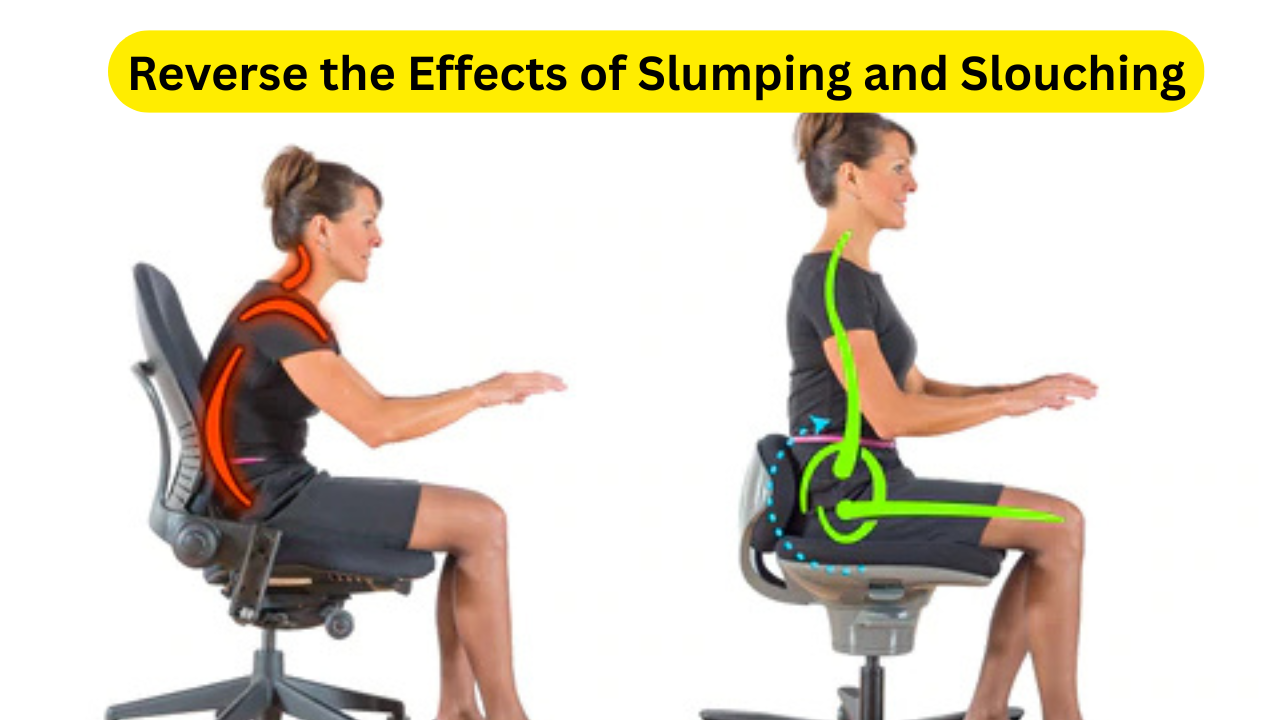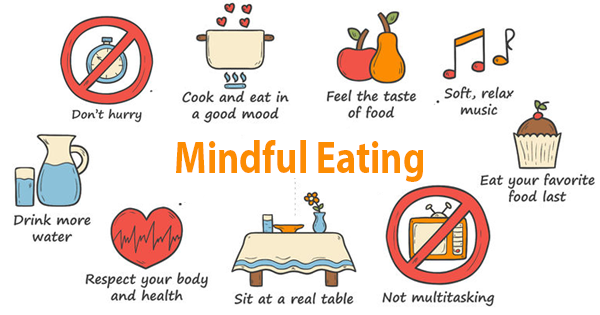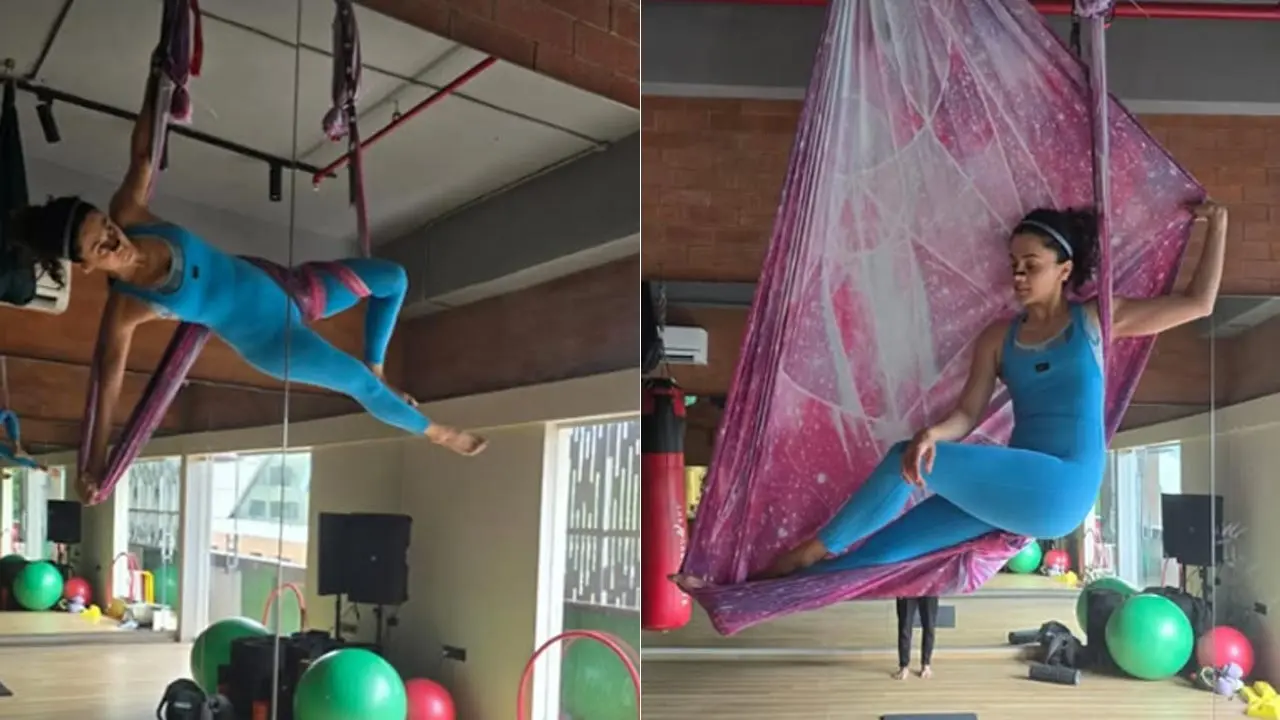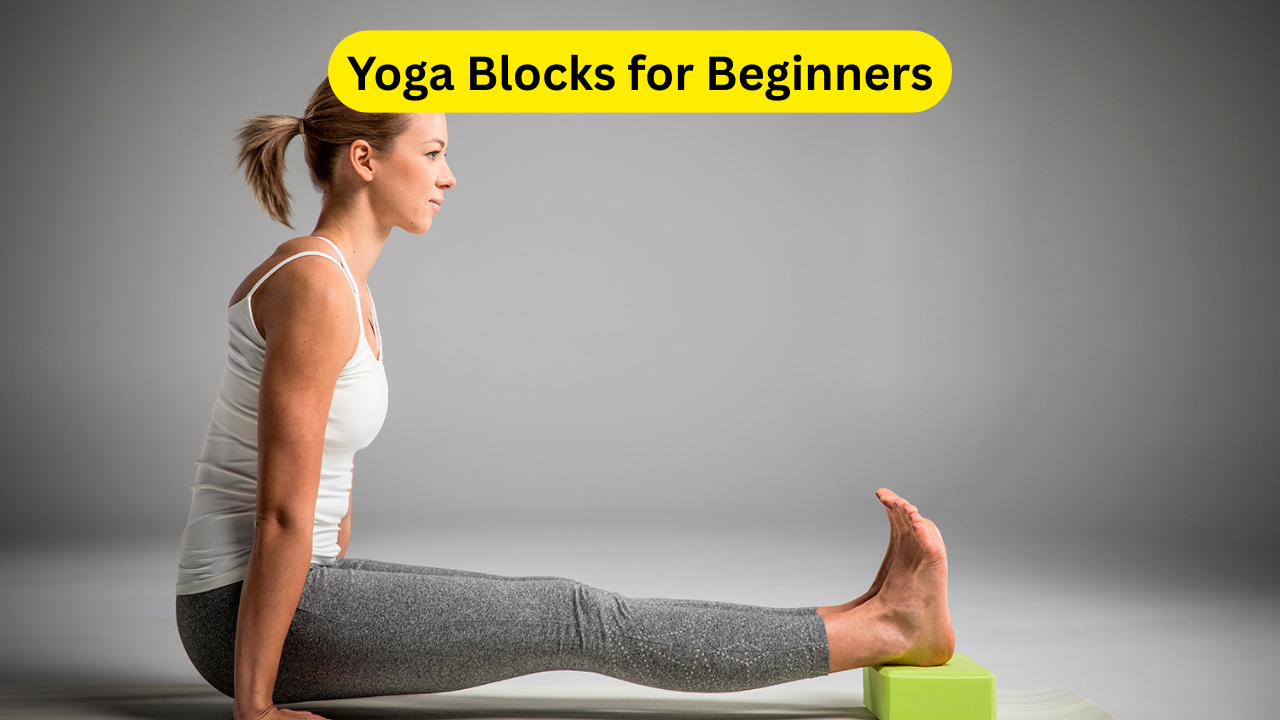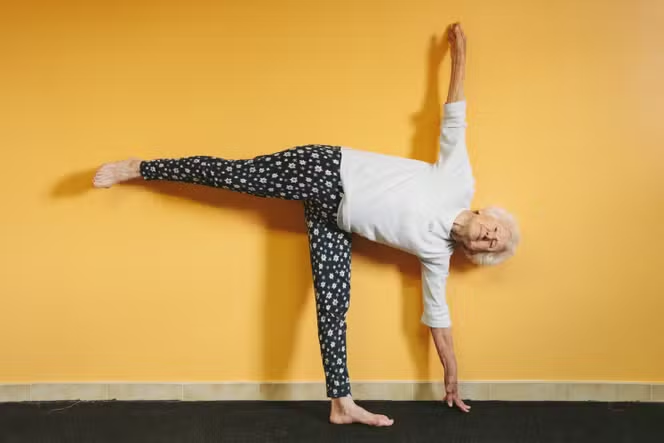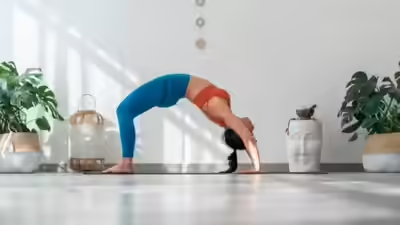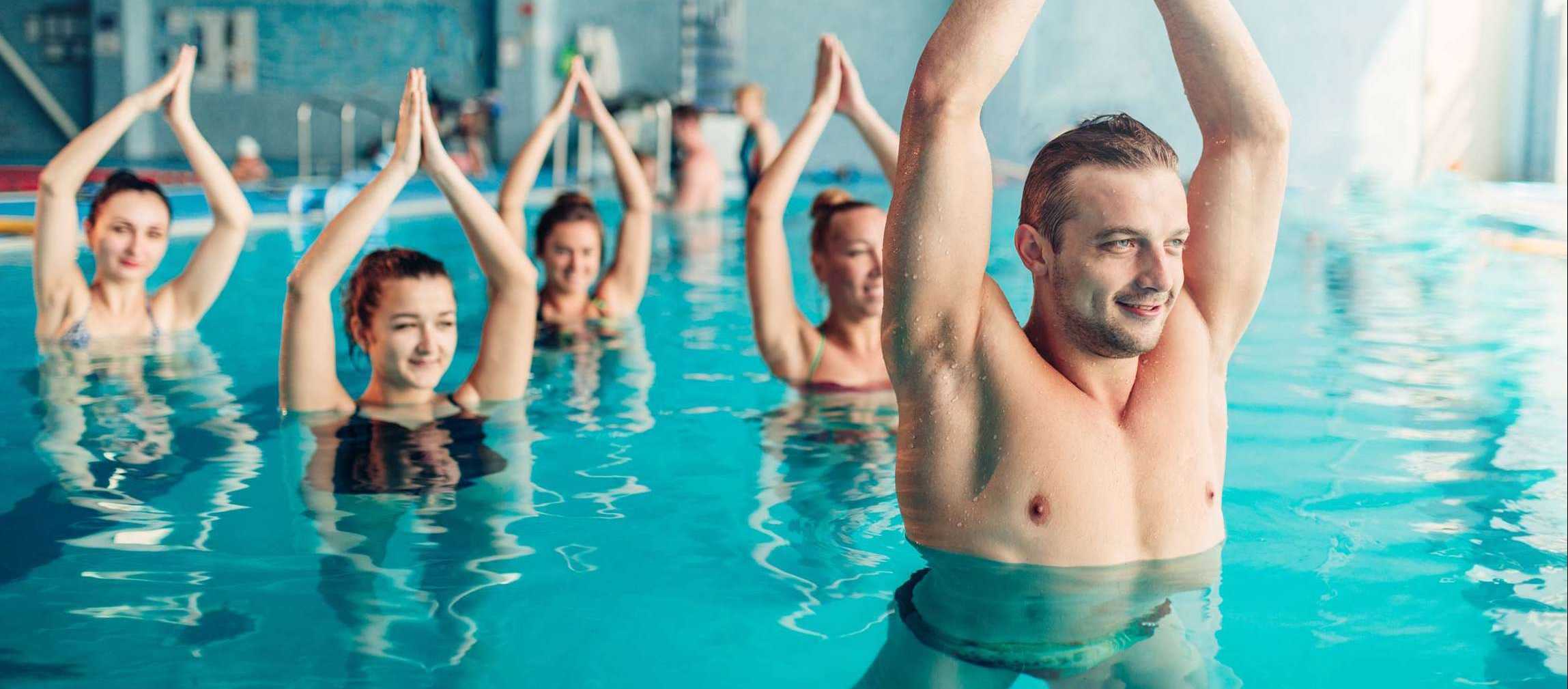Reverse the Effects of Slumping and Slouching: In today’s digital era, the human body is under constant stress from prolonged hours spent sitting, typing, or scrolling. Whether you’re working from home, commuting long distances, or binge-watching your favorite series, the results are often the same: slumped shoulders, a rounded upper back, and a misaligned spine. Slouching and poor posture have become silent culprits behind chronic discomfort, fatigue, and even decreased confidence. This is not just a cosmetic issue — it’s a structural problem that affects your long-term musculoskeletal health.
The postural deterioration caused by slouching goes far beyond the visible stoop. It puts excessive pressure on muscles like the pectoralis minor, levator scapulae, upper trapezius, and sternocleidomastoid, pulling your body into misalignment. This creates imbalances between tight and weak muscles, resulting in what health professionals call Upper Crossed Syndrome (UCS) — a condition where the chest and neck muscles are tight, while the upper back and deep cervical flexors are weak. The long-term consequence? Chronic pain in the neck, shoulders, and upper back, plus limited mobility and breathing inefficiencies.
Thankfully, there’s hope. By integrating specific Pec Minor Stretches, techniques from RCI (Reset, Correct, Integrate), and posture-stabilizing strategies from TNS Co — PS (Thoracic Neutral Stability & Posture Strengthening), you can reverse the damage. This article will guide you through everything you need to know, from understanding the biomechanics to performing expert-backed exercises that target the root cause of slouching.
Understanding the Anatomy Behind Slouching
What Happens When You Slouch?
Slouching typically leads to an overactivation of certain muscle groups and underactivation of others. The Pec Minor, a small but significant muscle located beneath the Pectoralis Major, plays a crucial role in this dysfunction. When you sit or stand with rounded shoulders for extended periods, this muscle shortens, pulling the shoulder blades forward and downward. Over time, this contributes to poor alignment, restricted movement, and an exaggerated thoracic kyphosis (rounded upper back).
Other muscles affected include:
- Upper Trapezius & Levator Scapulae: Often overused and tight.
- Deep Neck Flexors: Weak due to forward head posture.
- Rhomboids and Lower Trapezius: Lengthened and underused.
Click here: The Best Yoga for Kids of All Ages in NYC: Top Studios & Classes 2025
RCI TNS Co — PS Method: Reset, Correct, Integrate
1. Reset Phase (RCI – Reset)
In the Reset phase, the goal is to release tight muscles and restore mobility. This involves:
- Myofascial Release of Pec Minor using foam rollers or massage balls.
- Neck and Thoracic Mobility Drills to loosen up stuck joints.
- Breath Work and Diaphragmatic Breathing to activate deep core stabilizers and relax overactive muscles.
2. Correct Phase (RCI – Correct)
Once mobility is restored, we move into the correction phase:
- Pec Minor Stretching (covered below in detail).
- Postural Awareness Training to teach the body correct alignment.
- Isometric Holds to retrain neurological control of postural muscles.
3. Integrate Phase (RCI – Integrate)
This stage combines stability, strength, and function:
- TNS Co — PS Exercises: Target deep spinal stabilizers and improve thoracic extension.
- Scapular Stability Work: Strengthens rhomboids, mid/lower traps, and serratus anterior.
- Daily Postural Habit Integration: Includes workstation setup, ergonomic tips, and posture check-ins.
Pec Minor Stretches to Improve Your Posture
1. Wall Pec Minor Stretch
- How to do it: Stand near a wall with one arm raised at a 120° angle. Gently rotate your body away from the wall until you feel a stretch in your chest.
- Duration: Hold for 30–45 seconds per side, repeat 2–3 times.
2. Doorway Stretch
- How to do it: Stand in a doorway with both arms at shoulder height and elbows bent. Step through the doorway slowly until you feel the stretch.
- Duration: 30 seconds per repetition.
3. Foam Roller Pec Stretch
- How to do it: Lie on a foam roller aligned along your spine. Open your arms out to the sides with palms up.
- Benefits: Great for chest expansion and improving thoracic mobility.
4. Floor Angel Exercise
- Purpose: Combines stretching with mobility control.
- How to do it: Lie flat on the floor with knees bent. Move your arms like you’re making snow angels, keeping them in contact with the floor.
- Reps: 10 slow reps.
Also read: Caterham Seven 310 Encore: Farewell to the Ford Sigma Era
Exercises to Reverse Slouching and Improve Posture
1. Wall Slides
Improves scapular control and thoracic extension.
- Stand against the wall with arms in a “W” position.
- Slide up while keeping the back and arms in contact with the wall.
- Reps: 10–12 slow reps daily.
2. Chin Tucks
Strengthens the deep neck flexors.
- Sit or stand upright, gently retract your chin without tilting the head.
- Hold for 5 seconds.
- Reps: 10 reps, 3 sets.
3. Prone Y’s and T’s
Builds strength in the mid/lower traps.
- Lie on your stomach, raise arms in a “Y” or “T” shape off the floor.
- Reps: 3 sets of 10 each.
4. Band Pull-Aparts
- Use a resistance band, hold it shoulder-width.
- Pull apart, squeezing shoulder blades.
- Focus: Strengthens rhomboids and rear delts.
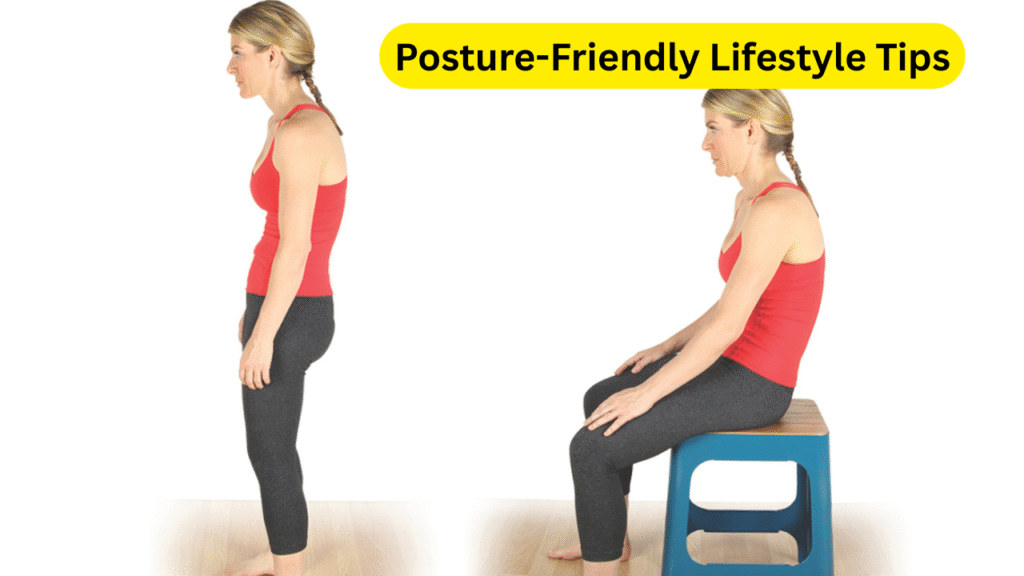
Posture-Friendly Lifestyle Tips
- Workstation Ergonomics: Keep screen at eye level, feet flat, and wrists neutral.
- Frequent Breaks: Every 30 minutes, stand up, stretch, and move.
- Use a Lumbar Roll or Support: Encourages natural spinal curve.
- Sleep Posture: Use a pillow that supports neck alignment and avoid belly sleeping.
Reverse the Effects of Slumping and Slouching Conclusion
Improving your posture isn’t just about standing straight — it’s a commitment to long-term physical health. When you slouch, you’re silently training your body into dysfunction. But the good news is, just as it adapted to bad habits, it can be retrained through the right approach. With targeted Pec Minor stretches, conscious alignment, and muscle balance, you can feel immediate and long-term benefits.
Implementing the RCI TNS Co — PS method is not a quick fix, but it is a scientifically grounded, holistic strategy that focuses on cause, not just symptoms. The Reset, Correct, and Integrate phases offer a progressive roadmap to reverse years of neglect and restore your body’s natural balance.
Consistency is key. Even 10–15 minutes of posture-focused work each day can drastically improve how you feel and function. These changes enhance not only physical well-being but also mental clarity, energy levels, and even confidence.
Don’t underestimate the power of good posture. It’s foundational to all movement and performance. Every time you catch yourself slouching and correct it, you’re strengthening your neuromuscular system and protecting your long-term mobility.
Start today. Your future self — standing tall, breathing deeply, and moving freely — will thank you.
Reverse the Effects of Slumping and Slouching FAQs
1. What is the pec minor muscle and why is it important?
The pectoralis minor is a thin, triangular muscle located beneath the larger pectoralis major. It plays a critical role in stabilizing the scapula (shoulder blade). When it becomes tight — often from slouching or excessive sitting — it pulls the shoulders forward and down, leading to poor posture and restricted shoulder movement. Stretching and releasing this muscle is essential for achieving optimal upper-body alignment.
2. How often should I stretch my pec minor to see results?
You should aim to stretch your pec minor at least 3–5 times per week, especially if you have a desk job or spend long hours in a sedentary position. Incorporating mobility drills and strengthening exercises into your routine will accelerate posture correction. For best results, combine stretching with the full RCI TNS Co — PS framework.
3. What are signs that poor posture is affecting my health?
Common symptoms include neck and upper back pain, frequent headaches, shoulder impingement, numbness in the hands, reduced lung capacity, and even fatigue. These are often linked to muscular imbalances and nerve compression from a chronically slouched posture.
4. Can posture exercises replace chiropractic or physical therapy?
While exercises are incredibly beneficial and can sometimes prevent the need for professional treatment, they shouldn’t fully replace healthcare support for acute or chronic conditions. Think of exercises as preventive and complementary tools. If you’re experiencing severe pain, limited mobility, or nerve symptoms, consult a physical therapist or chiropractor for a personalized plan.
5. How long does it take to see improvements in posture?
With daily consistency, many people begin to see and feel changes within 2–4 weeks. Full muscular rebalancing and postural correction may take 8–12 weeks or longer, depending on the severity of imbalances. The key is long-term commitment and lifestyle integration — not just one-off stretching.

I am the founder and writer of Healthwali.com. Here I personally publish every update, Fitness and Yoga guide , read more for you – that too in easy language.
